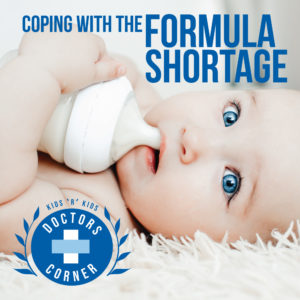
Everybody’s heard the phrase, “don’t cry over spilled milk,” but what if there’s no milk to spill? Parents and caregivers across the country have been hit hard by baby formula supply chain issues and plant closures. Fortunately, there’s a bottle at the end of the tunnel; according to the FDA Commissioner, production will begin again soon and formula should be making its way to shelves again mid-summer. What should families do in the meantime? Homemade or watered-down formulas are not nutritionally sound and can be dangerous. Here are some tips from the experts for filling tiny tummies safely.
Try a different formula: Introduce a new formula slowly by gradually mixing it with the existing formula. Ask your child’s pediatrician for recommendations or look up NASPGHAN’s list of comparable formula brands.
Look for international formulas: Some foreign formula companies have been given permission to sell in the United States. Make sure to purchase from reliable businesses and double-check conversions – the FDA has a chart on their website.
Ask your pediatrician for short-term options: Does your provider carry samples of formula in the office? Would your baby tolerate a temporary switch to cow’s milk, a non-dairy milk, or a toddler formula? Physicians can give safe guidance in these emergency situations.
Connect with a milk bank: A local HMBANA-accredited milk bank may be an option for babies who tolerate breast milk. This accreditation ensures that all donations have been screened, properly stored, and that the donors don’t have any diseases or take medications that affect their milk.
Contact formula companies: Reaching out to formula companies directly may help you find available products or safe substitutes. Similac and Enfamil have dedicated request lines, and Gerber can connect callers with a certified nutrition or lactation consultant.